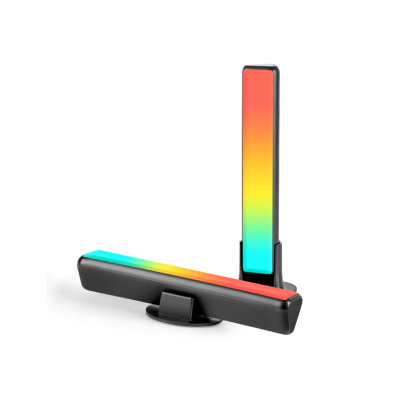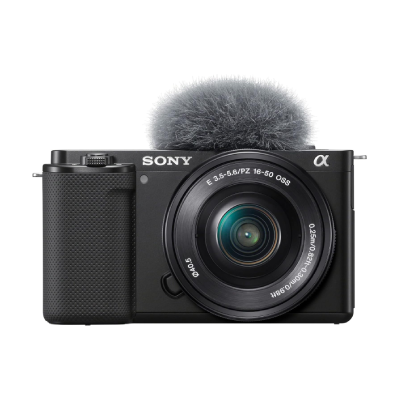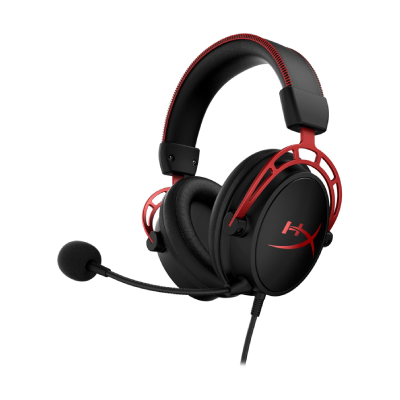Good quality microphone is crucial for your viewers' experience. It removes background noise making it better to hear you. Furthermore, having a mic adds a professional touch to your stream. and shows your dedication to it. Trust us, you might lose some viewers if they don't see your strong commitment to streaming. Overall, a good mic is a simple way to make your live streams more enjoyable for everyone.
So, in this article, we'll help you choose the best microphone for your live stream, taking into account all the needs. Firstly, we will dive into the criteria for picking the right mic. Then, we will write our best ones for every budget.
So, how to choose a microphone?
Here are the main criteria:
Microphone Type:
Condenser vs. Dynamic: Condenser microphones are more sensitive and capture a broader range of frequencies, making them suitable for detailed vocals. Dynamic microphones are more rugged and handle high sound pressure levels well, making them great for live environments with potential background noise.
Polar Pattern:
Cardioid, Bidirectional, Omnidirectional: The overall difference in microphone polar patterns lies in the sides of capturing the sound. A cardioid mic is great for solo streamers, focusing on the streamer's voice while minimizing background noise (like keyboard typing). Bidirectional mics suit interviews or discussions, capturing voices from opposite sides. Omnidirectional mics are versatile for group streams or capturing ambient sounds in the streaming space.
Connectivity:
USB vs. XLR: USB microphones are convenient and plug directly into your computer, while XLR microphones offer more flexibility and are compatible with professional audio interfaces or mixers (you may have to buy one). Choose based on your setup and desired level of control.
Frequency Response:
Consider the range of frequencies the microphone can capture. A broader frequency response generally allows for more detailed audio reproduction. The most common frequency range in mics is from 20Hz to 20000Hz. That’s basically the range perceptible to the human ear, so you don’t need it higher or lower.
Accessories:
Some microphones come with accessories like shock mounts, pop filters, and stands. These can enhance your streaming setup and improve audio quality. Shock mount suspends the microphone to reduce vibrations and handling noise for clearer audio. Pop Filter is placed in front of a microphone to minimize plosive sounds and breath noises for cleaner audio. Stand provides stability and hands-free support for the microphone during recordings or performances.
Note: While a microphone may help to handle background noises, it's crucial to recognize that a significant portion of noise reduction relies on the audio software and filters employed in your setup.
Now, let’s jump to the microphone picks!
Budget (under $100)
Samson Q2U:

The Samson Q2U is a versatile microphone suitable for both beginners and experienced streamers. Its dynamic cardioid polar pattern ensures clear audio capture while reducing background noise. With USB and XLR connections, it offers flexibility for various setups. The Q2U is known for its affordability, making it a budget-friendly choice for streamers. However, it lacks some advanced features found in more expensive options.
Specifications: Dynamic microphone, USB and XLR connectivity, cardioid polar pattern, 50Hz - 15kHz frequency response.
Pros: Good sound quality, versatile, plug'n'play.
Cons: Limited advanced features.
Accessories: Desk stand, support rod (boom arm).
Price: $69.
Razer Seiren Mini:

The Razer Seiren Mini is a compact and stylish microphone designed for streamers with limited space. It features a supercardioid pickup pattern for clear voice recording while minimizing background noise. Its plug-and-play setup makes it extremely user-friendly. However, its small size may not offer the same audio quality as larger mics.
Specifications: Condenser microphone, USB connectivity, supercardioid polar pattern (have a narrower pickup angle compared to cardioid pattern), 20Hz - 20kHz frequency response.
Pros: Compact and cute design, easy setup.
Cons: Limited audio quality compared to larger mics.
Blue Snowball Ice:

The Blue Snowball Ice is a popular choice for entry-level streamers. Its plug-and-play USB connectivity makes it hassle-free to set up. The cardioid pickup pattern ensures clear sound capture from the front, reducing background noise. However, it has a fixed cardioid pattern and lacks advanced features found in higher-end microphones.
Specifications: Condenser microphone, USB connectivity, cardioid polar pattern, 40Hz - 18kHz frequency response.
Pros: Stylish retro design, easy setup, good audio quality for the price.
Cons: Limited customization, fixed cardioid pattern.
Accessories: Adjustable stand.
Price: $48.90.
Rode PodMic:

The Rode PodMic is a dynamic microphone specifically designed for podcasters and streamers. It delivers broadcast-quality sound with a tailored-for-voice frequency response. Its durable build and internal shock mount reduce handling noise. However, it requires an audio interface due to its XLR connectivity and comes at a higher price point. So, if you already have an audio interface, this is probably the best choice for you.
Specifications: Dynamic microphone, XLR connectivity, cardioid polar pattern, 20Hz - 20kHz frequency response.
Pros: Excellent sound quality, durable build, low handling noise.
Cons: Requires audio interface.
Price: $99.
Mid-end ($100 - $200)
Blue Yeti:

The Blue Yeti is a widely recognized USB microphone favored for its versatility. It offers multiple pickup patterns (cardioid, bidirectional, omnidirectional, and stereo) to suit various recording scenarios. This versatility comes at the cost of a slightly higher price, but it remains a top choice for streamers.
Specifications: Condenser microphone, USB connectivity, multiple polar patterns, 20Hz - 20kHz frequency response.
Pros: Versatile, high-quality sound, multiple polar patterns.
Cons: Too sensitive.
Price: $129.99.
HyperX QuadCast S:

The HyperX QuadCast S is a USB condenser microphone that combines both style and functionality. It features customizable RGB lighting for a visually appealing setup. With its four selectable polar patterns, including stereo and bidirectional, it offers versatility for various streaming scenarios. Its touch-sensitive mute button adds convenience during live broadcasts, though it comes at a relatively higher price.
Specifications: Condenser microphone, USB connectivity, four polar patterns, 20Hz - 20kHz frequency response.
Pros: Stylish design, versatile polar patterns, touch-sensitive mute button.
Cons: USB-only, less portable.
Accessories: Shock mount.
Price: $159.99.
Elgato Wave:3:

The Elgato Wave 3 is a USB condenser microphone designed with content creators in mind. It offers exceptional audio quality with a cardioid polar pattern. One standout feature is its Clipguard technology, which prevents audio distortion even when you get excited during your streams. The Wave 3 is easy to integrate into your existing.
Specifications: Condenser microphone, cardioid polar pattern, 70Hz - 20kHz frequency response.
Pros: Excellent audio quality, Clipguard technology.
Cons: Limited to a cardioid pattern.
Accessories: Desktop stand.
Price: $149.99.
High-end (above $200)
Shure MV7:

The Shure MV7 is a hybrid microphone designed for both podcasters and streamers. It offers USB and XLR connectivity, allowing you to choose your preferred setup. With built-in voice isolation technology and customizable settings through the ShurePlus MOTIV app, it provides precise control over your audio quality.
Specifications: Dynamic microphone, USB and XLR connectivity, cardioid polar pattern, 50Hz - 16kHz frequency response.
Pros: Versatile connectivity options, voice isolation technology, customization.
Cons: Higher price point.
Price: $249.99.
Shure SM7B:

The Shure SM7B is a legendary microphone renowned for its broadcast-quality sound. With a flat, wide-range frequency response, it captures audio with incredible clarity. This dynamic microphone features a cardioid pickup pattern and excellent noise rejection. However, it requires an audio interface, and its premium quality comes with a premium price tag.
Specifications: Dynamic microphone, XLR connectivity, cardioid polar pattern, 50Hz - 20kHz frequency response.
Pros: Exceptional audio quality, noise rejection, professional grade.
Cons: Requires audio interface, higher price.
Accessories: Foam windscreen, close-talk windscreen, locking yoke mount
Price: $399.99.
Remember that choosing the right microphone is a crucial step in improving your audio quality, however, it's also essential to use audio software and filters effectively to handle background noise and further enhance your streams. Whether you're just starting or a seasoned streamer, the right microphone can significantly elevate your content and make your live streams more enjoyable for your audience.



